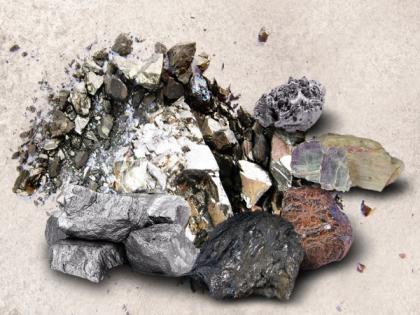Critical mineral investments stalled by economic uncertainty despite strong demand outlook: IEA
By ANI | Updated: June 8, 2025 10:08 IST2025-06-08T10:01:53+5:302025-06-08T10:08:17+5:30
New Delhi [India], June 8 : Investment decisions in the global critical mineral sector face significant market and economic ...

Critical mineral investments stalled by economic uncertainty despite strong demand outlook: IEA
New Delhi [India], June 8 : Investment decisions in the global critical mineral sector face significant market and economic uncertainties, despite strong expectations for future demand growth, according to the International Energy Agency (IEA).
In its Global Critical Minerals Outlook 2025, the IEA added that investment momentum in critical minerals development weakened in 2024, rising just 5 per cent compared to 14 per cent in 2023. Adjusted for cost inflation, real investment growth stood at only 2 per cent, reflecting growing economic and market uncertainties despite strong long-term demand expectations.
According to IEA, exploration activity plateaued after consistent growth since 2020. While spending rose for lithium, uranium, and copper, it declined sharply for nickel, cobalt, and zinc. The funding in startups also slowed, the IEA report added.
The low mineral prices failed to trigger new investments and affected projects led by new market entrants.
The report added that diversification is the watchword for energy security, but the critical minerals world has moved in the opposite direction in recent years, particularly in refining and processing.
Between 2020 and 2024, growth in refined material production was heavily concentrated among the leading suppliers.
As a result, the geographic concentration of refining has increased across nearly all critical minerals, particularly for nickel and cobalt, the report added.
The average market share of the top three refining nations of key energy minerals rose from around 82 per cent in 2020 to 86 per cent in 2024 as some 90 per cent of supply growth came from the top single supplier alone: Indonesia for nickel and China for cobalt, graphite and rare earths.
The report further notes that, despite surging demand, significant supply expansionsprimarily from China, Indonesia, and the Democratic Republic of the Congohave driven prices down, particularly for battery metals.
The IEA said that the swift increase in battery metal production highlighted the sector's ability to scale up new supply more quickly than for traditional metals like copper and zinc. Since 2020, supply growth for battery metals has been twice the rate seen in the late 2010s.
As a result, following the sharp price surges of 2021 and 2022, prices for key energy minerals have continued to decline and have returned to pre-pandemic levels.
Lithium prices, which had surged eightfold during 2021-22, fell by over 80 per cent since 2023. Graphite, cobalt, and nickel prices also dropped by 10 to 20 per cent in 2024.
Critical minerals such as copper, lithium, nickel, cobalt and rare earth elements are essential components of many of today's rapidly growing energy technologies - from wind turbines and electricity networks to electric vehicles. Demand for these materials is growing quickly as energy transitions gather pace.
Disclaimer: This post has been auto-published from an agency feed without any modifications to the text and has not been reviewed by an editor
Open in app